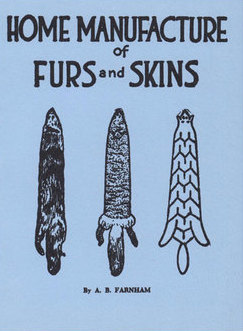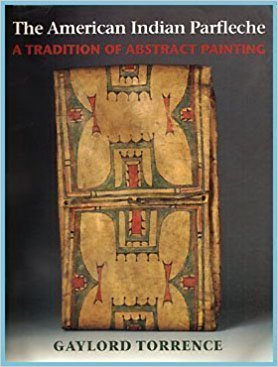Below are Tanning and skin working related books collected by myself and Tamara Wilder over the years. The video version talks about these books and a little history and such. Some of them are broadly recommended, and some are only for people with certain specific interests.
Many, many books on Tanning, Glue Making and Leather working that are not listed here are available as free downloads from the Downloads page, SkillCult.com/freestuff
Buckskin, The Ancient Art of braintanning, Steven Edholm and Tamara Wilder, 1997:
The book I wrote with Tamara Wilder in 1997. From what I've seen, it is probably the longest and most detailed book on home tanning to date, especially considering it's focus. As of writing this, it is currently out of print with plans to revise and re-print in digital and print forms. Covers wetscrape braintanning, with some satellite subjects like sharpening and dyeing buckskin with natural materials. If you've read it, please consider leaving a review on Amazon.
Deerskins Into Buckskins, Matt Richards, 1997:
Published the same year as our book, this one also covers the wetscrape method, but focused on bucking, which is using alkali to soak the hide instead of water. It is the best, if not only, book reference for that technique. There is also a companion DVD.
Traditional Tanning Leather and Furskin, Lotta Rahme, 2014:
This would probably be my number one recommendation of a book on general tanning covering a lot of ground and many methods. It has lots of anecdotes and tidbits on traditional tanning from various parts of the world, and good basic information on tanning chemistry and theory. If a person were interested in braintanning primarily, they should get a book on that subject. This may be currently the best single book reference for vegetable (bark) tanning. Lotta is an experienced, small production tanner, with her own micro-tannery, so she has real insight, skill and knowledge to offer.
Fish Leather Tanning and Sewing, Lotta Rahme, 2006:
Lotta's cool book on tanning fish skins. This is a popular subject. I keep hearing about and seeing more and more fish leather. Much of the information is also contained in her general leather tanning book, but there is also a lot of information specific to fish skin and various species of fish, though they seem largely to be species from her part of the world, Sweden.
Blue Mountain Buckskin, Jim Riggs:
My teacher and teacher of my teacher Jim Riggs. Jim was largely responsible for disseminating braintanning knowledge, having learned from his teacher Buckskin Slim Scheafer, who's book is below. This is the best all around reference on dry scrape braintanning. Fun, thorough and insightful. #1 recommendation for a book on dry scrape braintanning.
Jim died last year. He was friend and mentor many and had a profound and enduring effect on the primitive skills movement. Many people's live took radically different directions because of either contact with Jim, or with others infected with his knowledge and philosophy. My buckskin book contains much of Jim and would not exist without him. Blue Mountain Buckskin is an enduring slice of Jim in the best way.
Tribute page for Jim Riggs: https://www.facebook.com/pg/jimriggsmemories/community/
The Tanning Spirit video, Melvin Beatty, click here to watch:
Mel is one of the best tanners I know to this day and has always produced the best quality wetscrape buckskin. His tips helped me get to producing better wetscrape buckskin. You can watch his video on the subject on youtube now.
Also visit mel at the following. He posts tips and experience on braintanning at his facebook page.
And Facebook as BraintanBuckskin
The Indian Art of Tanning Buckskin
"Buckskin Slim" Schaefer, 1973
Jim Rigg's teacher Slim wrote this book at Jim's urging. It was published the same year as Larry Belitz' book, Brain Tanning the Sioux Way, those being the first two books specific to braintanning that I know of. This book is out of print, but they show up on ebay and elsewhere now and again at not unreasonable prices.
Brain Tanning the Sioux Way, Larry Belitz:
This is a small book and lacking somewhat in detail. There is enough information to learn the process, but it will be more trial and error than when using a more in depth book. I think a lot of braintanners in the 70's and early 80's probably learned at least partly from this book.
Making the Attikamek Snowshoe, Henri Vaillancourt:
Available on the Author's website, this book is fantastic. It is exactly what it should be, a detailed documentation of a traditional art, with as much important detail as possible, recorded in quality images and insightful text. Henri is part anthropologist and part craftsman, which is how it should be, but almost never is. The section on hide working outlines interesting traditional methods common to moose country for tanning skins and producing rawhide, both very important skills in that part of the world.
Home Tanning and Leather Making Guide, A.B. Farnham:
This guide has some useful information, but leaves something to be desired as a stand alone guide to tanning. It is still one of the better references for vegetable tanning and well worth taking advantage of, all the more so, because it is out of copyright and can be download from tanning book collection
Home manufacture of Furs and Skins, A.B. Farnham, no date:
A useful book when it comes to handling and dressing furs. Available as a free download from tanning book collection
Home Tanning of Leather and Small Fur Skins, USDA, 1923:
Of limited use due to lack of detail, but worth reading. Download from tanning book collection.
Primitive Wilderness Living and Survival Skills, John and Gerry McPherson, 1993:
This book contains John McPherson's small book on braintanning by the dry scrape method. It is a competent and useful guide to that subject, and also contains lots of other great stuff on primitive living skills of all kinds. A good and useful book worth the price of admission from some old friends back in the day.
Aboriginal Skin Dressing in Western North America, Arden Ross King, 1938:
This book is unobtanium, and likely only available in a few large university libraries.
The art of leather manufacture, Alexander Watt, 1885:
One of the better old books on tanning, although the only digital version I could find is the later 1906 version. Available to download from the tanning book collection. Much of the better part may be derived from the De LA LANDE translation below, which is more recommended.
The Art of Tanning and of Currying Leather... Collected From the French of monsieure De La Lande and others, 1773:
or download in my tanning book collection here
Maybe the best all around old resource I've found, introduced to me by friend and tanning colleague Jason Leininger. Unusually well written and exhaustive for that time period. Anyone who reads french should go to the original text, as no doubt things are changed, left out, or lost in translation.
Dictionary of Leather-Working Tools, Circa 1700-1950 R.A. Salaman,1986:
Another book primarily for the enthusiast, tool maker and researcher. A jillion variations on leather working tools as well as some tools of the tanner and currier. Helpful in identifying old leather working and tanning tools.
Secrets of Eskimo Skin Sewing, Edna Wilder, 1976:
Traditional patterns and techniques from the source.
Glue, Gelatin, Isinglass, Cements and Pastes, Dawidowsky & Brannt, 1905:
This is the book I learned most of what I know about glue making from. It is a technical manual for manufacturers from the intersection of tradition and science at a time when hide glue was still king. Dowload free from Glue Books Collection
The American Indian Parfleche a Tradition of Abstract Painting, Gaylord Torrence, 1994:
An art book, packed full of art-speak. There is some interesting history, and the small amount of functional detail it does contain helped me figure the process out eventually. The photos are excellent. This is a beautiful and unique practical art form that originally combined a functionality tailor fit to a singular lifestyle with expressive art. Very neat book.

























